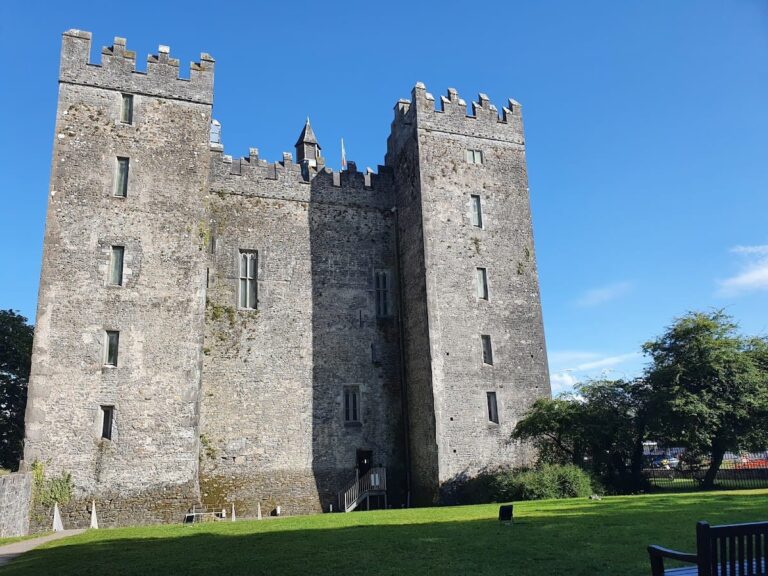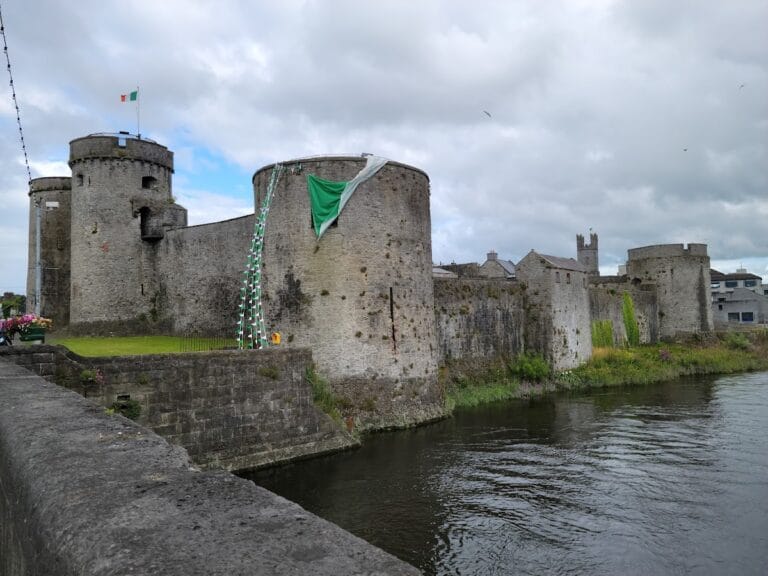Knappogue Castle: A Historic Tower House in County Clare, Ireland
Visitor Information
Google Rating: 4.5
Popularity: Low
Google Maps: View on Google Maps
Official Website: www.knappoguecastle.ie
Country: Ireland
Civilization: Medieval European
Remains: Military
History
Knappogue Castle is located in the parish of Quin, County Clare, Ireland. It was built in 1467 by Seán Mac Conmara, son of Síoda Mac Conmara, as a late medieval tower house. The castle’s name means “castle of the place abounding in little hills,” reflecting the surrounding landscape. It served as the stronghold of the MacNamara family, a prominent Gaelic Irish sept.
By 1571, Knappogue Castle was the seat of the MacNamara sept, who held the title Earls of West Clancullen. During the Irish Rebellion of 1641, Donnchadh Mac Conmara, a lord of the castle, played a leadership role. The castle remained under MacNamara control throughout the Irish Confederate Wars in the 1640s.
Following the Cromwellian conquest of Ireland (1649–1653), the castle was confiscated under the Adventurers’ Act. It was granted to Arthur Smith, an English Parliamentarian, who occupied it from 1659 to 1661. After the monarchy was restored in 1660, ownership returned to the MacNamara family.
In 1800, Francis MacNamara, then High Sheriff of Clare, sold Knappogue Castle to the Scott family of Cahircon. The Scotts undertook significant restoration and expansion of the property. Later, in 1855, Theobold Fitzwalter Butler, 14th Baron Dunboyne, acquired the castle, making it the family seat. The Dunboyne family continued restoration efforts, adding a drawing-room, long room, west wing, clock tower, and gateway. These additions were designed by architects James and George Richard Pain.
During the Irish War of Independence (1919–1921), Clare County Council used the castle for meetings. The site was guarded by the East Clare Flying Column, and Michael Brennan, commander of the East Clare Brigade, established his headquarters there.
In 1927, the Irish Land Commission purchased the estate and transferred ownership to the Quinn family, local farmers. Under their care, the castle fell into disrepair. In 1966, Mark Edwin Andrews, a former U.S. Navy Assistant Secretary, and his wife Lavonne, an American architect, bought the castle. They restored it extensively around 1969, working with the Shannon Free Airport Development Company and Bord Fáilte Éireann. Their restoration aimed to return much of the castle to its 15th-century condition while preserving later additions.
Later, Andrews leased part of the castle to the Irish government for cultural and tourism purposes. In 1996, Shannon Heritage acquired Knappogue Castle. It remains a preserved historic site reflecting its layered history.
Remains
Knappogue Castle is a late medieval tower house originally built in 1467. It features typical construction of Irish residential castles from that period, with thick stone walls and a vertical layout designed for defense and habitation.
The castle underwent significant expansion in the mid-19th century. Additions included a drawing-room, a long room, a west wing, a clock tower, and a gateway. These were designed by architects James Pain and George Richard Pain, reflecting the architectural styles of that era.
Restoration efforts in the 20th century returned much of the castle to its original 15th-century appearance. At the same time, the later architectural additions were preserved, providing a continuous record of the castle’s occupation and development.
The surrounding grounds include a historic garden established in 1817, covering about 1.248 acres (0.505 hectares). The garden has been restored to its original state, featuring garden walls decorated with climbing roses, grapevines, and various clematis species.
Today, the castle stands restored and maintained, showcasing both its medieval origins and later modifications. It remains an important example of Irish tower house architecture and its evolution over centuries.










